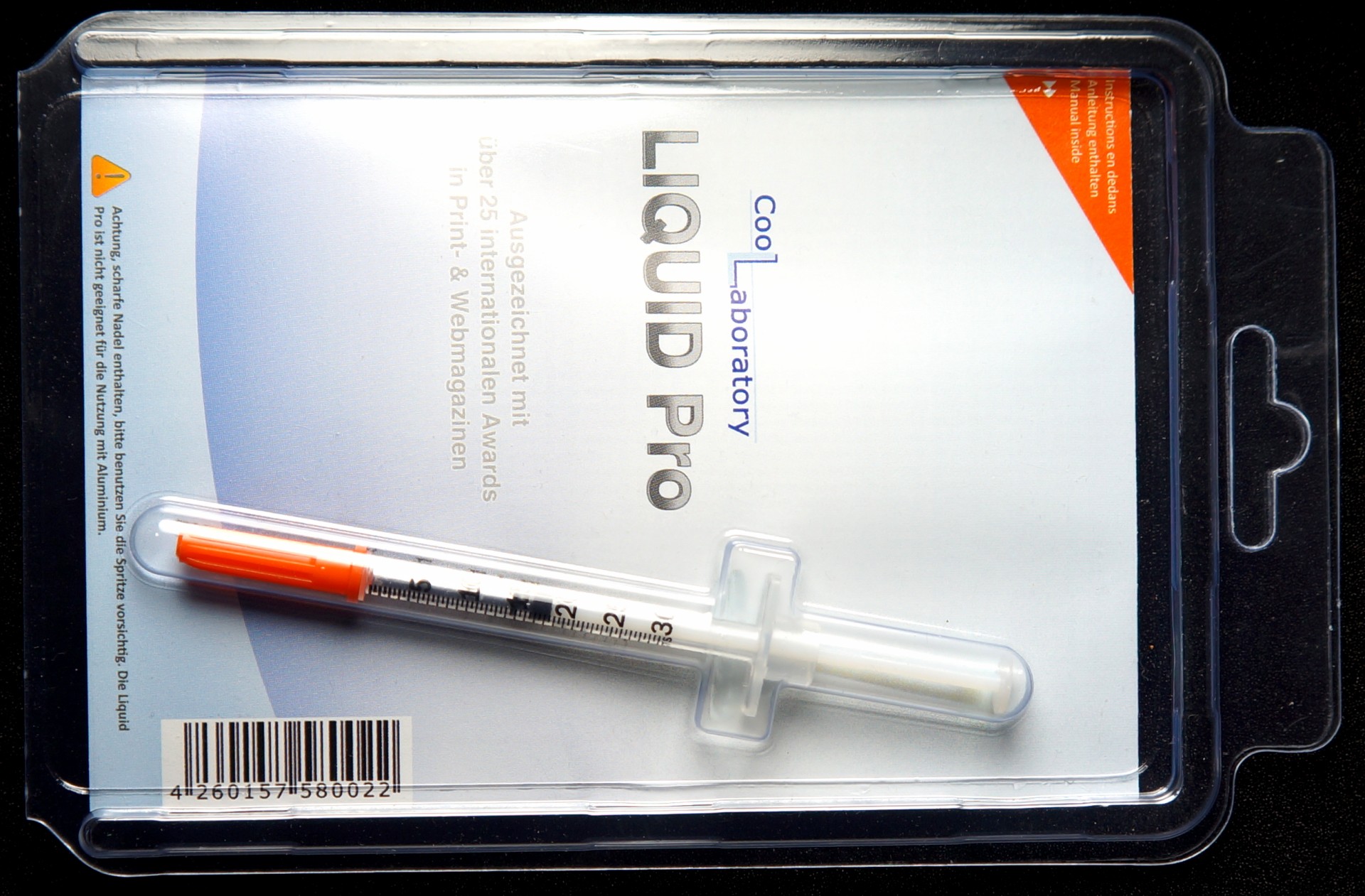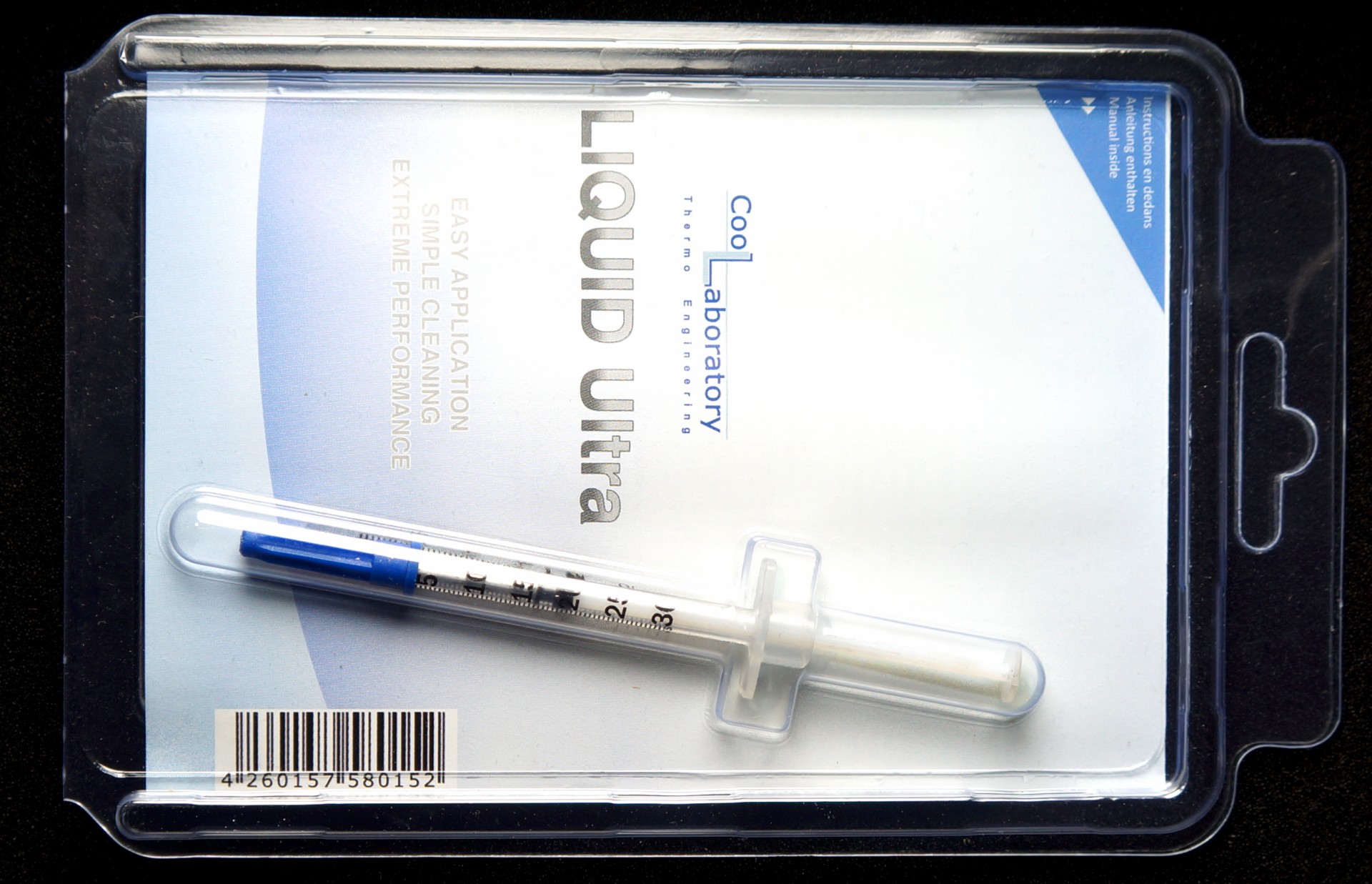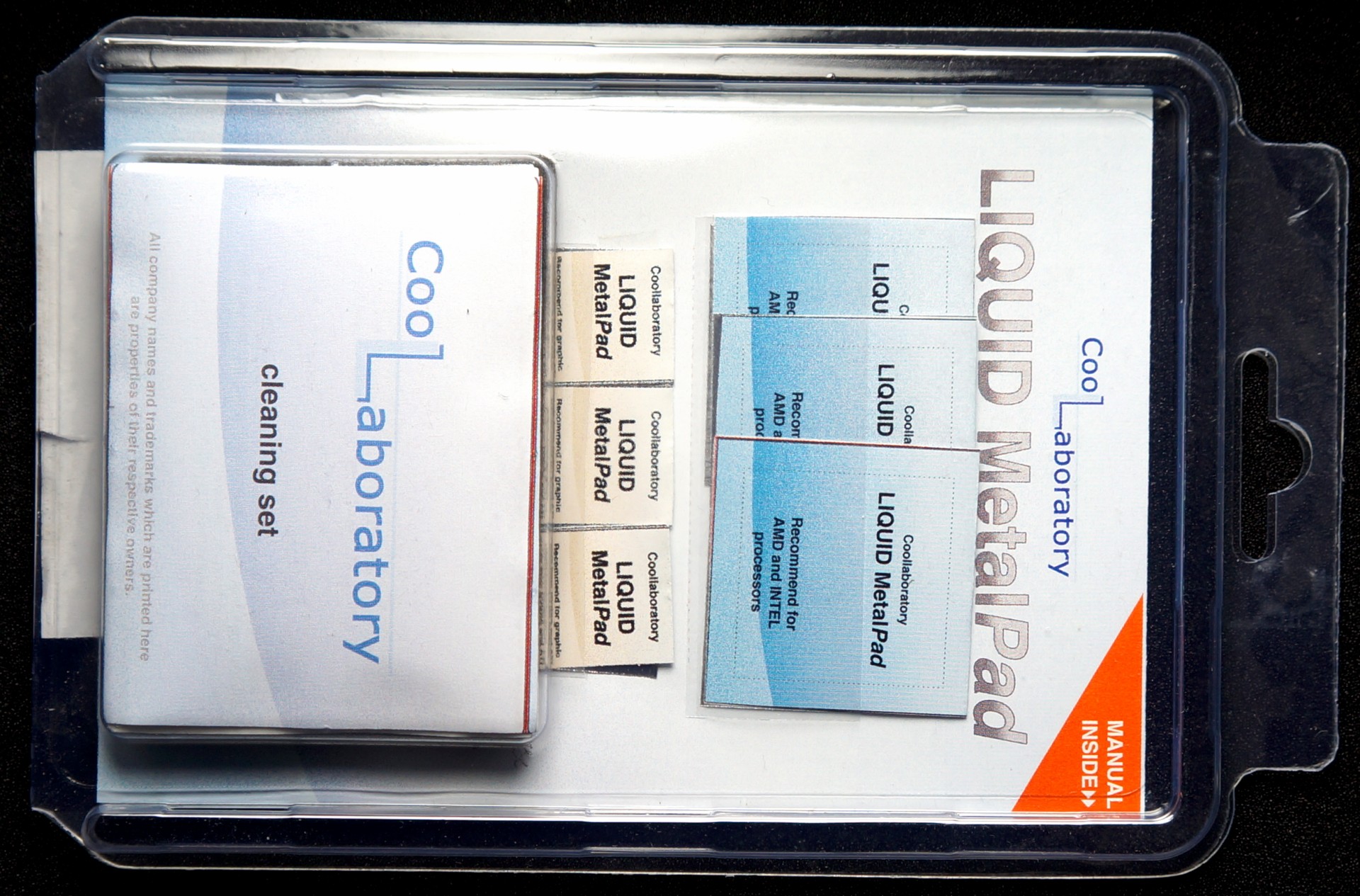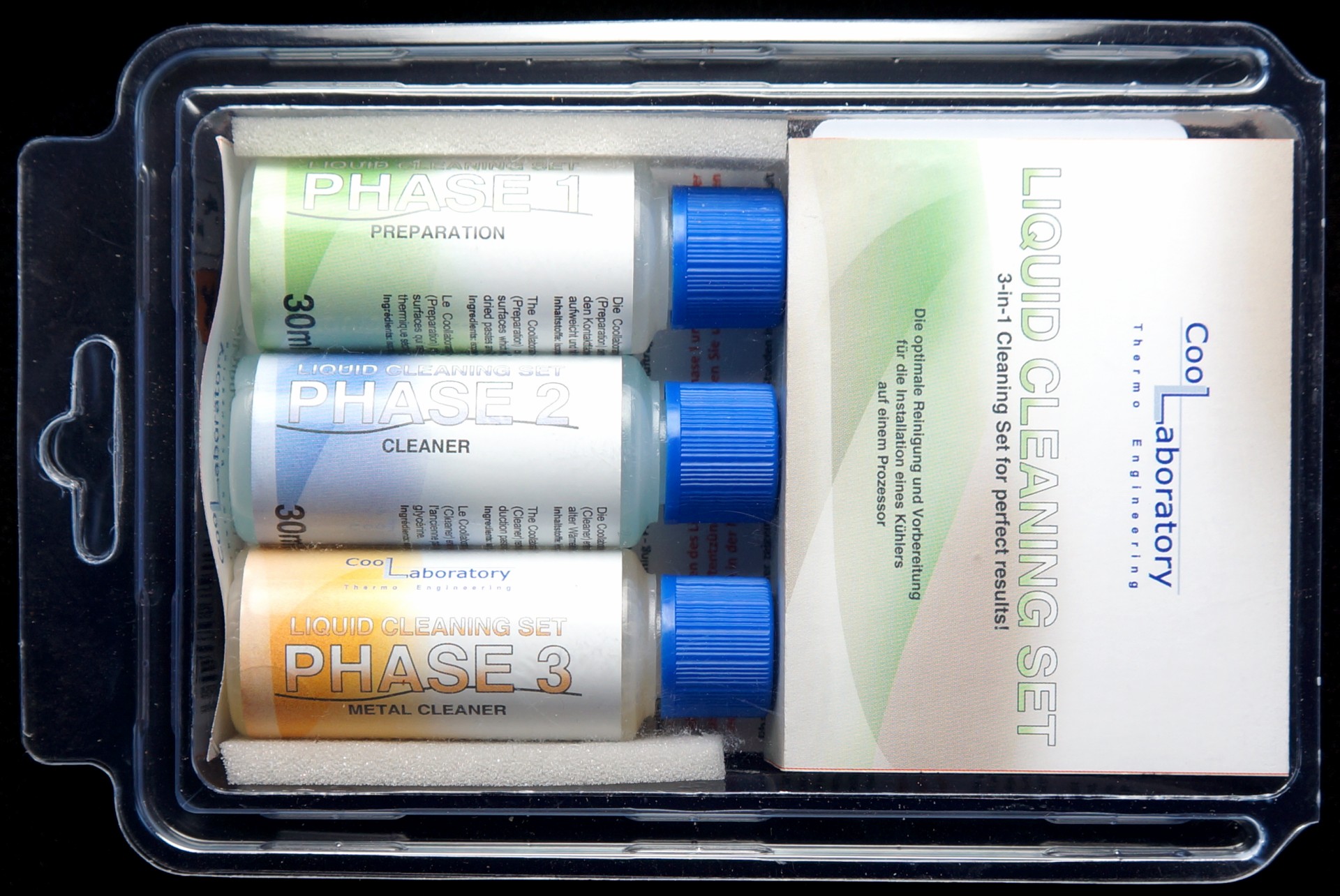Thermal Paste Comparison, Part Two: 39 Products Get Tested
It's time for the numbers. In addition to testing liquid metal compounds and thermally conductive adhesives, each paste is discussed on its own merits before we chart out the results of four usage cases. After all, these products behave differently.
Pastes: Coollaboratory
Coollaboratory Liquid Pro
This is the grandfather of liquid metal compounds, and it still holds the record for thermal conductivity. Unfortunately, it also requires the greatest degree of skill to apply. Only experienced, gutsy professionals should use it, and even then, it's both expensive and difficult to remove. Liquid Pro cannot be used with aluminum heat sinks, but can be used with copper- and nickel-plated ones.
| Coollaboratory Liquid Pro | |
|---|---|
| Thermal Conductivity | 82.0 W/(m*K) |
| CPU Water Cooling, High Pressure | 30.0 ΔT (22 °C ambient) |
| CPU Air Cooling, High Pressure | 32.0 ΔT (22 °C ambient) |
| CPU Air Cooling, Low Pressure | 33.0 ΔT (22 °C ambient) |
| GPU Cooling | Not Measured |
| Electrically Conductive | Yes |
| Viscosity | 1 (Liquid) |
| Ease of Use | 1 (1-10, higher numbers mean easier to use) |
| Application Hints | This product demands meticulous workmanship, and we'd recommend purchasing the optional cleaning kit. For experts only! |
| Price (approximate) | $14 |
Coollaboratory Liquid Ultra
This latest offering from Coollaboratory is somewhat easier to use than its predecessor. But that only means it's a little easier to apply than Liquid Pro. Its thermal attributes aren't quite as good as a result of the different composition. However, Liquid Ultra is still better than any conventional paste. At the end of the day, you'll have to decide if one or two degrees of improved cooling performance is worth the effort and risk. Again, you cannot use this stuff with aluminum heat sinks, though it is compatible with copper- and nickel-plated ones.
| Coollaboratory Liquid Ultra | |
|---|---|
| Thermal Conductivity | 38.4 W/(m*K) |
| CPU Water Cooling, High Pressure | 30.0 ΔT (22 °C ambient) |
| CPU Air Cooling, High Pressure | 33.0 ΔT (22 °C ambient) |
| CPU Air Cooling, Low Pressure | 34.0 ΔT (22 °C ambient) |
| GPU Cooling | Not Measured |
| Electrically Conductive | Yes |
| Viscosity | 1 (Liquid) |
| Ease of Use | 2 (1-10, higher numbers mean easier to use) |
| Application Hints | This product demands meticulous workmanship, and we'd recommend purchasing the optional cleaning kit. For experts only! |
| Price (approximate) | $14 |
Coollaboratory Liquid MetalPad
While these pads can be handled and cut to size easily, the devil is in the details. During burn-in, you have to ensure that the Tcase temperature reaches at least 140 °F, which equates to a Tcore of about 80 °C (176 °F). Some AMD CPUs throttle back at 140 °F, and even our FX-8350 had a hard time holding the required temperature long enough for a successful burn-in. Older AMD processors may be on the brink of meltdown at 140 °F. Without a successful burn-in, however, this product's thermal conductivity is worse than the cheapest paste. It took disconnecting all of my fans to burn the pads in. Naturally, doing this involves some risk.
| Coollaboratory Liquid MetalPad | |
|---|---|
| Thermal Conductivity | 10.0 W/(m*K) |
| CPU Water Cooling, High Pressure | 31.5 ΔT (22 °C ambient) |
| CPU Air Cooling, High Pressure | 35.0 ΔT (22 °C ambient) |
| CPU Air Cooling, Low Pressure | 35.5 ΔT (22 °C ambient) |
| GPU Cooling | 62.0 ΔT (22 °C ambient) |
| Electrically Conductive | Yes |
| Viscosity | N/A |
| Ease of Use | 3 (1-10, higher numbers mean easier to use) |
| Application Hints | Make sure that the pad reaches 140 °F for the burn-in to work. Thus, not suitable for water coolers and AMD CPUs. |
| Price (approximate) | $8 (for one CPU pad) |
Coollaboratory Liquid Cleaning Set
Get Tom's Hardware's best news and in-depth reviews, straight to your inbox.
High prices and tedious clean-up make Coollaboratory's products very hard for the newbie to use. They're great for experts who want to leave zero overclocking headroom unexploited, though you'll probably find this cleaning kit necessary.
| Coollaboratory Liquid Cleaning Set | |
|---|---|
| Application Hints | Indispensable, if you ever want to remove Coollaboratory liquid metal products from your CPU or heat sink. |
| Price (approximate) | N/A |
Current page: Pastes: Coollaboratory
Prev Page Pastes: be quiet!, Corsair, And Dimastech Next Page Pastes: Cooler Master
Igor Wallossek wrote a wide variety of hardware articles for Tom's Hardware, with a strong focus on technical analysis and in-depth reviews. His contributions have spanned a broad spectrum of PC components, including GPUs, CPUs, workstations, and PC builds. His insightful articles provide readers with detailed knowledge to make informed decisions in the ever-evolving tech landscape
-
dragonfang18 I loved the toothpaste part. What about Vicks Vaporub? I wonder how that thing would do.Reply -
TehDudeMan Great article guys! As a reader for over 10 years pretty much daily, this reminds me of the old Tom's Hardware. These type of in depth articles on enthusiast products are what I love.Reply -
Matt Edwards A great article, agree the application of the compound, not the compound itself is most important.Reply
Like ledpellet I too am curious about these diamond compounds. Wonder if it offers similar results to the Coollaboratory products with an easier application, or if the results simply don't justify the price. E.g in Australia, Innovation Cooling IC7 Diamond 7 Carat Thermal Compound Paste - 1.5G can be found for as much as $25. The cheapest I have managed to find it for is $15. For that price it would want to be good considering the leading GELID GC Extreme, can be found for around $8. -
danwat1234 Coollaboratory Liquid Ultra isn't all that good after a year of hard use. In fact, it completely hardens / dries. On my X9100 after 9 months of nearly 24/7 100% load, I started seeing high temps and after 1 year auto shut downs while crunching. Turns out it was shutting off because it hit the 105 C thermal protection.Reply
Opened it up; thermal compound was as hard as a rock. has to pocket knife blade and sand it down.
So for longevity it sucks. That is something to consider, not just initial performance, but performance months and years down the road. Especially for laptops that aren't designed to be opened up frequently for repasting.
After trying Liquid Ultra many times and having it fail on me, I've put on Arctic MX-2 that has a supposed 8 year durability rating. Initial performance is great, we'll see how it lasts (been 3 weeks so far). -
slomo4sho CLU and Arctic MX-4 are both great products. MX-2 and MX-4 can often be found free after rebate so they are an exceptional value.Reply



